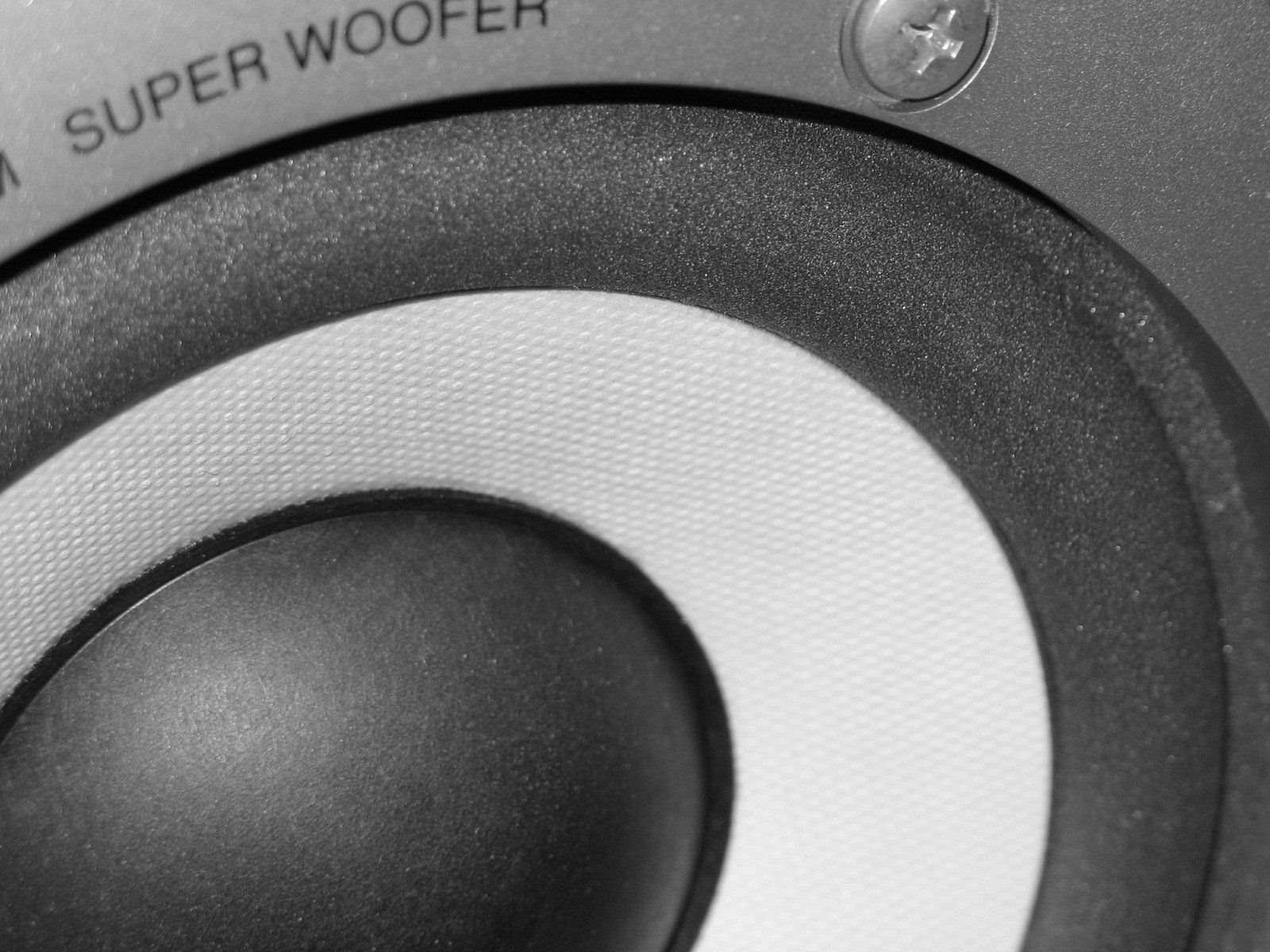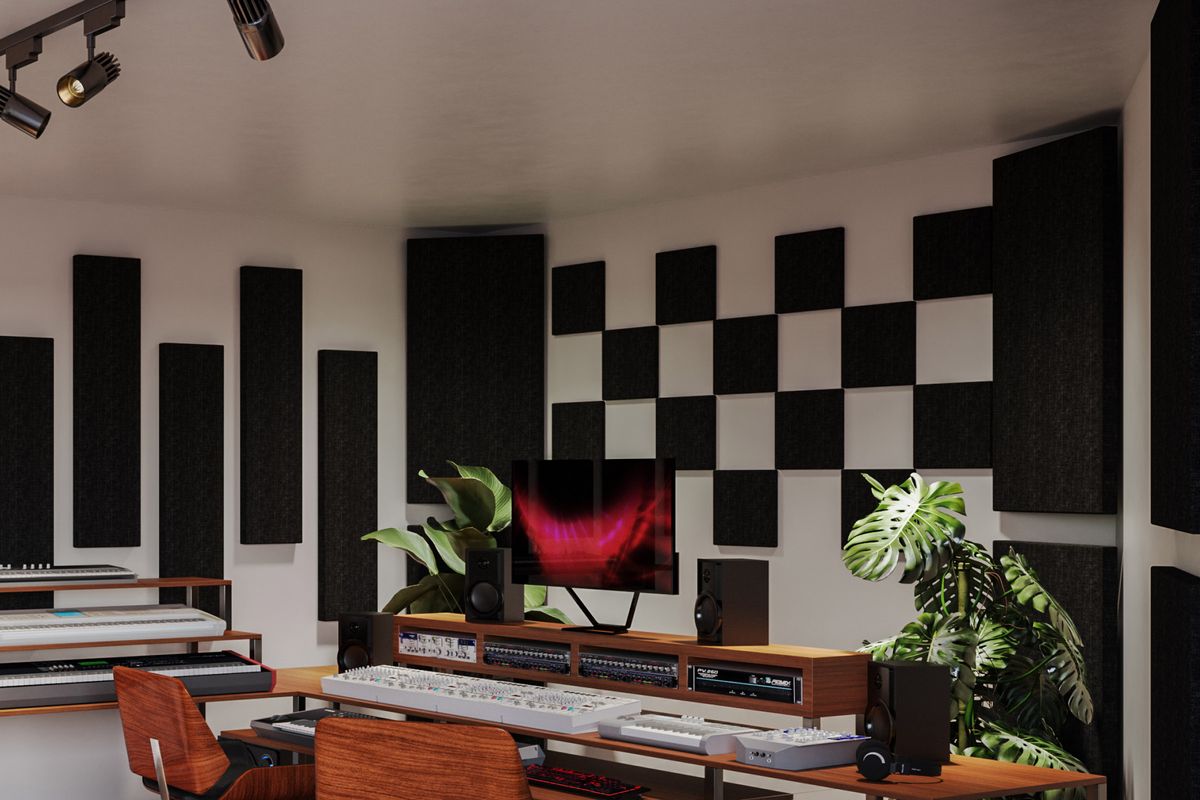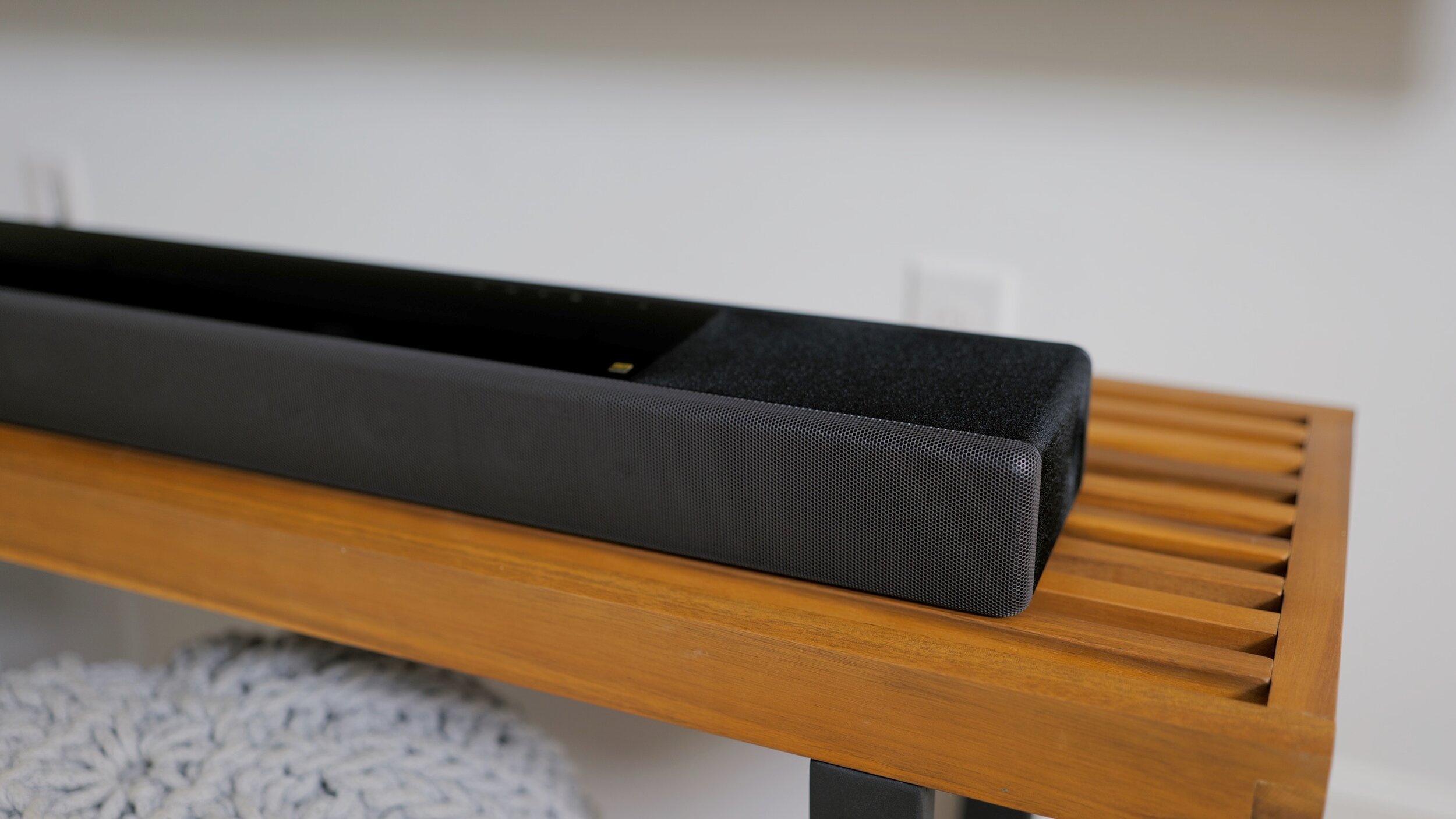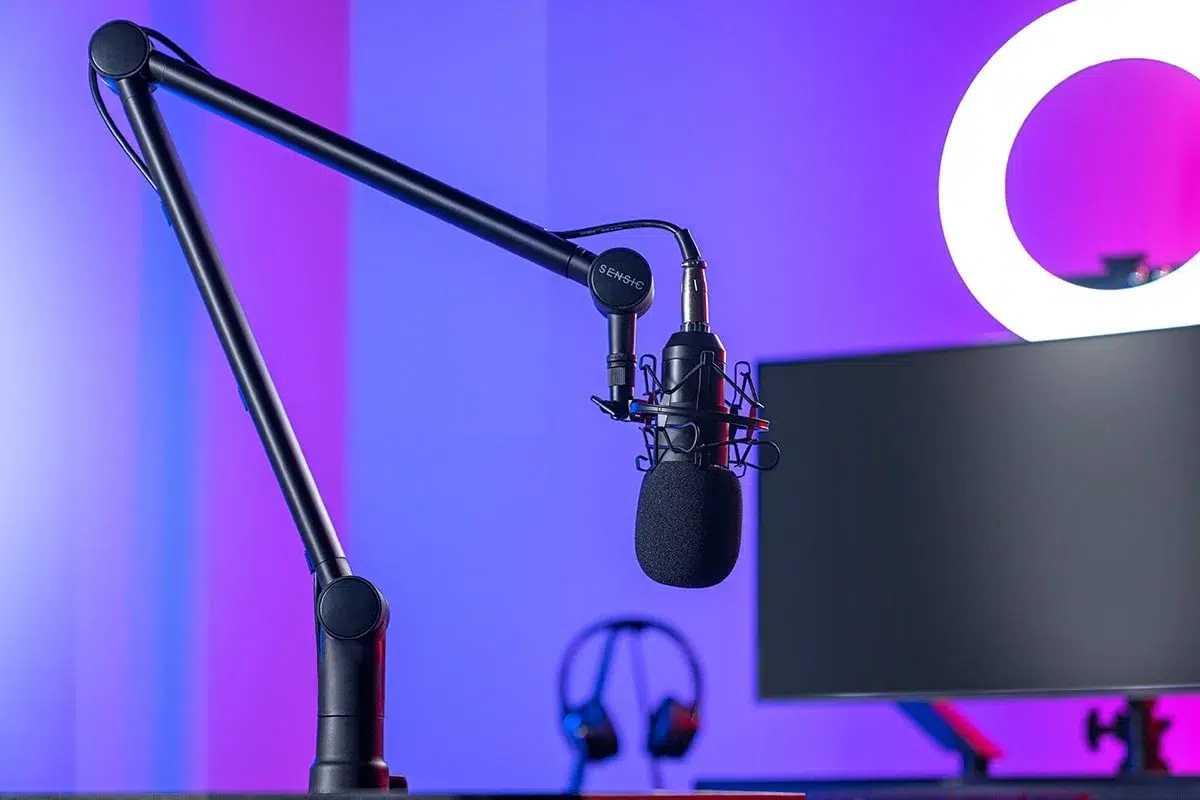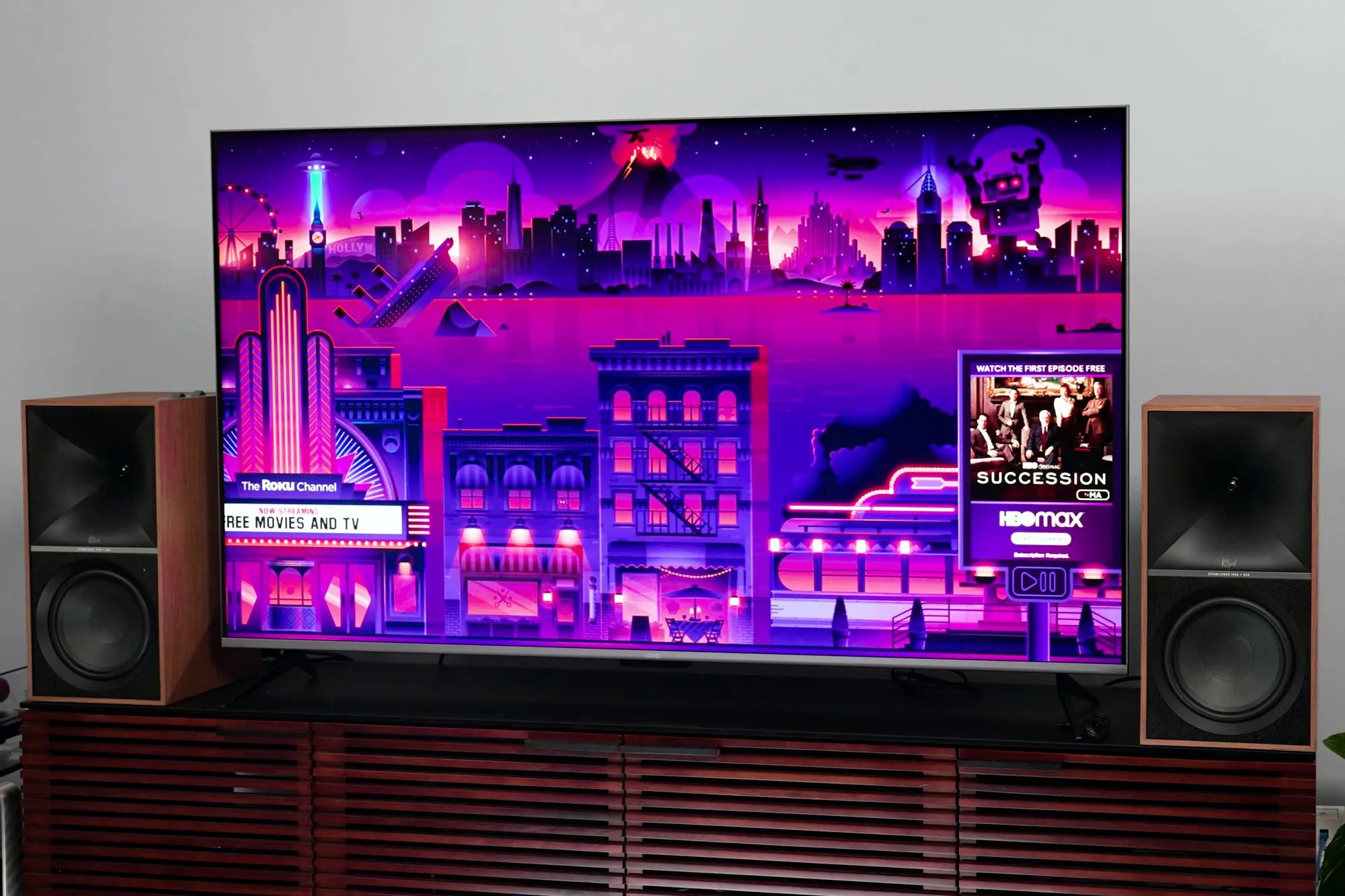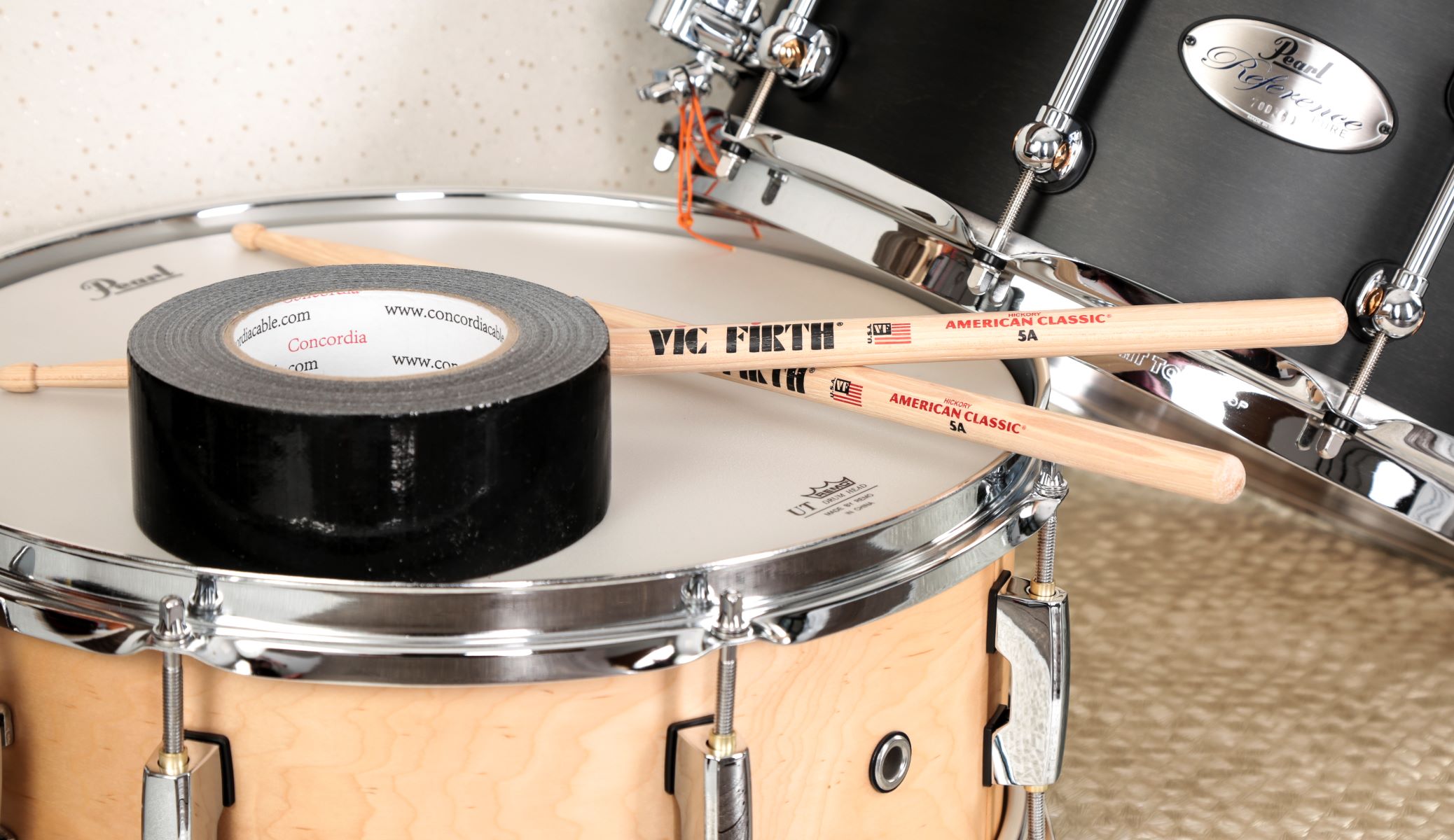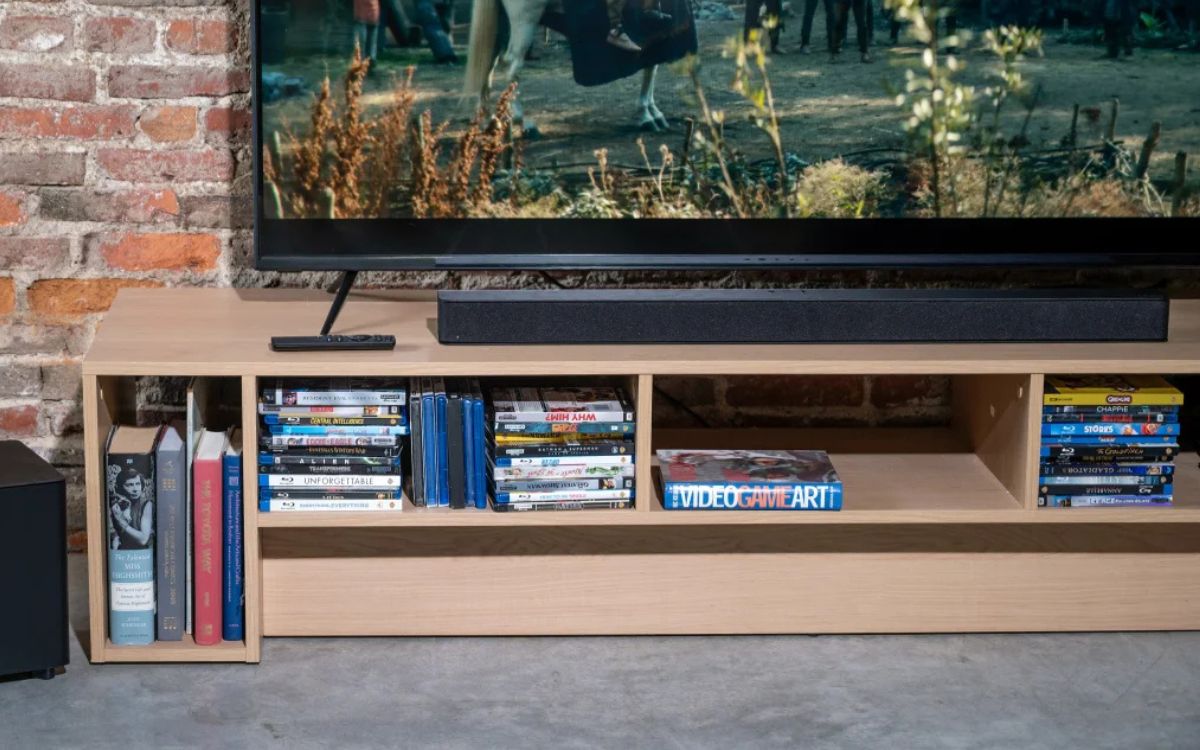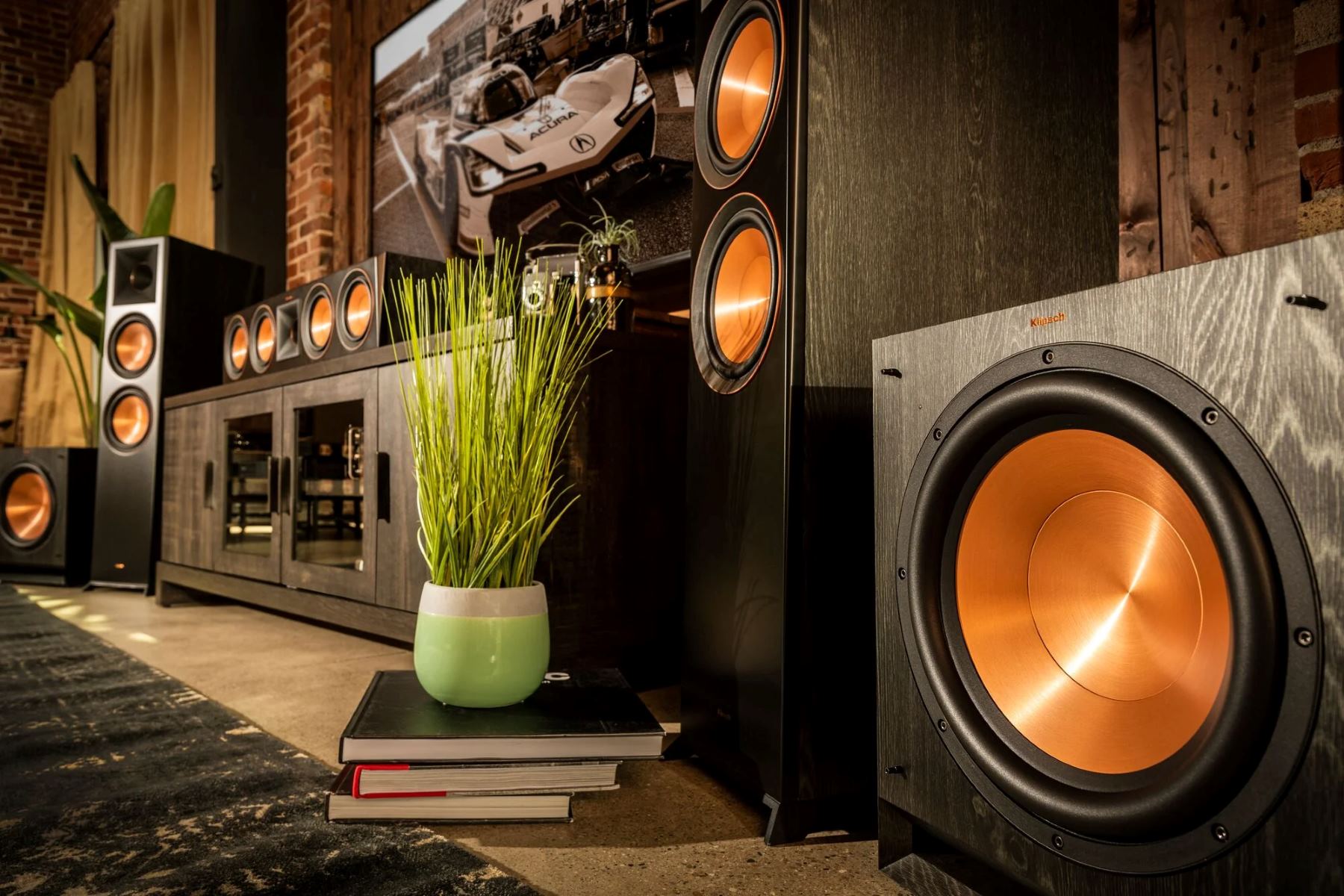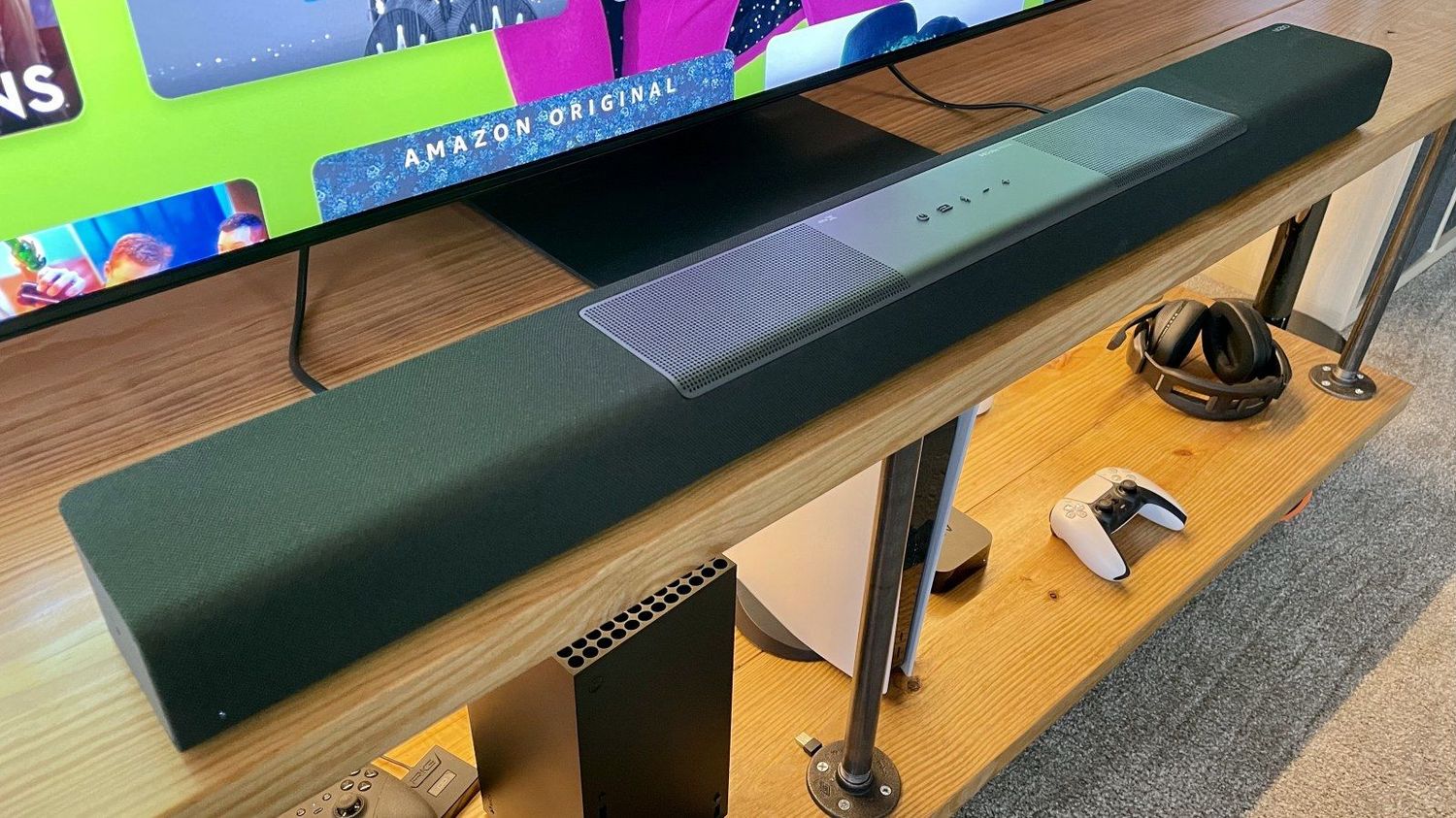Home>Devices & Equipment>Subwoofer>Where Do You Put Subwoofer For TV
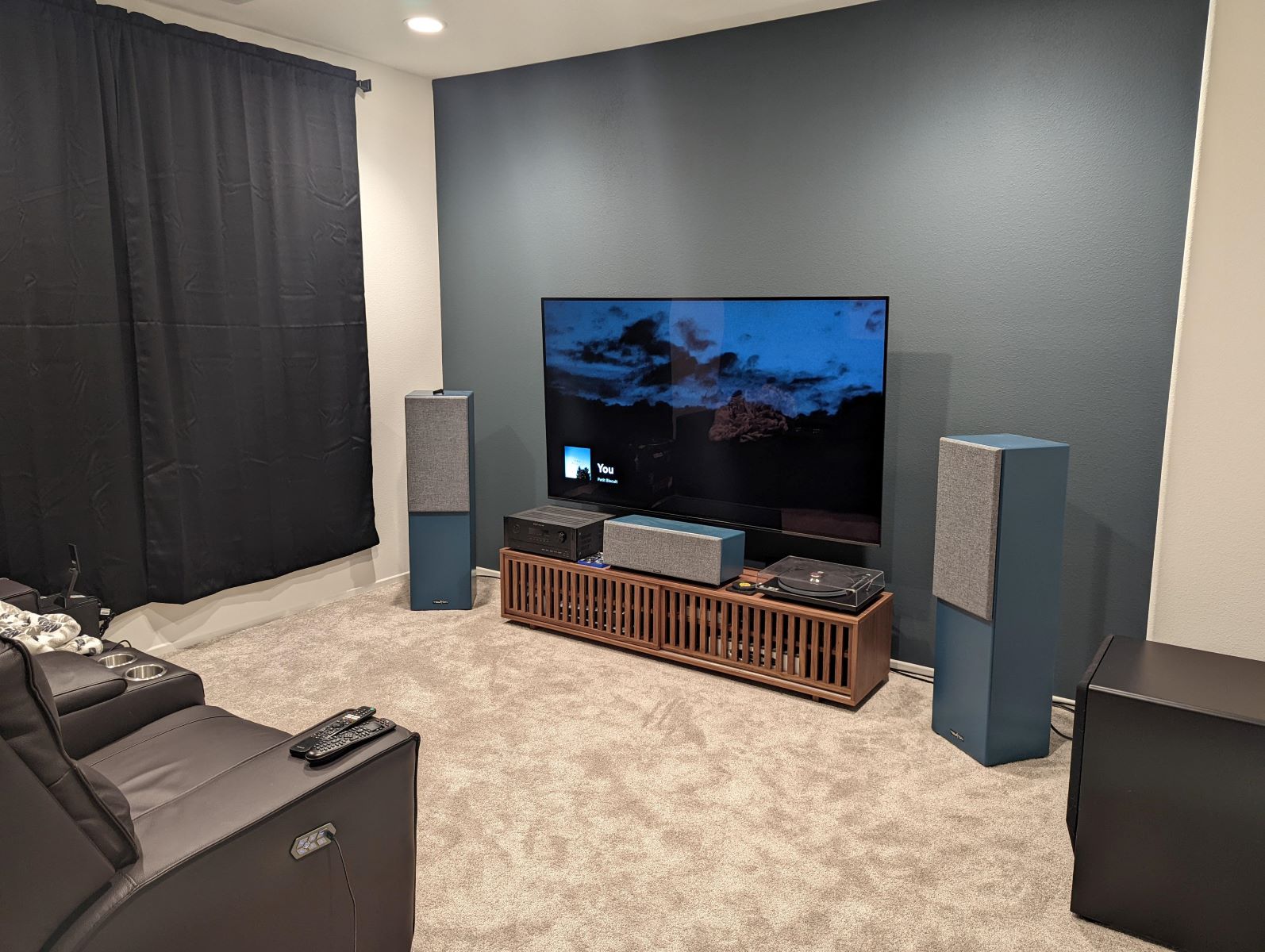

Subwoofer
Where Do You Put Subwoofer For TV
Published: January 20, 2024
Discover the best placement for your subwoofer when setting up your TV sound system. Find out where to position your subwoofer for optimal audio performance.
(Many of the links in this article redirect to a specific reviewed product. Your purchase of these products through affiliate links helps to generate commission for AudioLover.com, at no extra cost. Learn more)
Table of Contents
Introduction
A subwoofer is an essential component of any home theater or audio system, designed to reproduce low-frequency sound, also known as bass. When it comes to enjoying an immersive and cinematic audio experience, having a well-placed subwoofer is crucial. It adds depth, richness, and realism to the audio, making explosions feel more intense and music more dynamic.
But where exactly should you place your subwoofer for your TV? The placement of your subwoofer can greatly impact its performance and the overall sound quality. It’s important to consider various factors such as the size and layout of your room, the positioning of your speakers, and the acoustics of the space. In this article, we will explore different options and considerations for subwoofer placement to help you achieve optimal audio performance with your TV.
Before we dive into the specific placement options, it’s worth noting that every room is different, and what works for one space may not work for another. It’s always recommended to experiment and test different placements to find the position that works best for your specific room and audio setup.
Placement Considerations
Before deciding on the placement of your subwoofer, there are some important considerations to keep in mind:
- Room size: The size of your room plays a crucial role in determining the placement of your subwoofer. Larger rooms may require multiple subwoofers or strategic placement to evenly distribute the bass throughout the space.
- Speaker placement: Consider the location of your main speakers. Ideally, your subwoofer should be placed near the main speakers to ensure a cohesive and seamless audio experience.
- Acoustics: Take into account the acoustics of your room. Hard surfaces like glass windows and bare walls can cause sound reflections, while carpets and curtains can absorb sound. Adjustments may be necessary to minimize these acoustic challenges.
- Furniture and decor: Consider the placement of furniture and other objects in your room. Obstacles can interfere with the sound waves and impact the overall audio performance.
Keeping these considerations in mind, let’s explore some common placement options for your subwoofer:
Near the TV
One of the most common placements for a subwoofer is near the TV itself. This placement is convenient and allows for a clean and streamlined setup. Plus, it can help create a more cohesive audio-visual experience by having the bass come from the same direction as the rest of the audio.
If your TV is placed on a stand or entertainment unit, consider positioning the subwoofer on the floor next to it. Ensure that it is at least a few feet away from the TV to prevent any interference. This placement allows the subwoofer to radiate sound directly into the room, providing a strong and impactful bass response.
However, keep in mind that the performance of your subwoofer can vary depending on the specific room and its acoustics. If the bass sounds too overpowering or boomy, you may need to experiment with different placements or make adjustments to the subwoofer settings.
It’s worth noting that some subwoofers are designed to be aesthetically pleasing and can double as furniture pieces. These models can be placed near the TV without compromising the overall decor of your room.
In summary, placing the subwoofer near the TV is a convenient and effective option that can enhance the overall audio experience. However, be prepared to make adjustments to the placement or settings to achieve the desired sound quality.
Corner Placement
An alternative placement option for your subwoofer is in the corners of the room. This placement takes advantage of the room’s natural acoustics and can help enhance the bass response.
When placed in a corner, the subwoofer can take advantage of the walls’ reflective surfaces, resulting in increased bass output and overall impact. The corner acts as a natural amplifier, allowing the low-frequency sound waves to bounce off the walls and fill the room. This can result in a more immersive and enveloping audio experience.
However, it’s essential to note that corner placement can sometimes lead to excessive bass buildup. The bass may become boomy or overpowering, and the sound quality may not be as accurate or balanced. To mitigate this issue, you can experiment with subwoofer settings or use bass traps, which are acoustic panels designed to absorb excessive bass frequencies and maintain a more even sound.
If you choose to place your subwoofer in the corner, position it a few inches away from both walls to prevent excessive vibrations and allow for proper air circulation. Adjustments may be necessary depending on the specific acoustics of your room.
Corner placement can work particularly well in smaller rooms or rooms with limited placement options. It maximizes the bass impact without taking up valuable floor space.
In summary, corner placement can be an effective choice for subwoofer placement, taking advantage of the room’s natural acoustics. However, be mindful of potential issues such as excessive bass buildup and make adjustments as needed to achieve the desired sound quality.
Cabinet Placement
If you have a dedicated media cabinet or entertainment unit, another option for subwoofer placement is within the cabinet itself. This placement offers a seamless and unobtrusive solution, keeping the subwoofer concealed and maintaining a clean aesthetic.
When placing the subwoofer inside a cabinet, it’s crucial to ensure that there is enough open space around it to allow for proper airflow and prevent overheating. Some subwoofers come with built-in ventilation systems, but it’s still important to monitor the temperature to avoid any potential damage.
Keep in mind that placing the subwoofer within a cabinet may slightly impact its bass response. The cabinet can act as an enclosure, which can affect the sound and make the bass seem less impactful. To mitigate this issue, you may need to make adjustments to the subwoofer settings, such as increasing the volume or adjusting the crossover frequency.
Additionally, consider the placement of other audio equipment within the cabinet. Surrounding devices can impact the subwoofer’s performance and introduce unwanted vibrations or interference. To minimize these issues, ensure that the subwoofer is properly isolated within the cabinet and positioned away from other electronics.
Cabinet placement is an excellent option for those who prefer a sleek and clutter-free setup. It allows you to hide the subwoofer, keeping the focus on the TV and other components. Just remember to account for any potential impact on sound quality and make the necessary adjustments for optimal performance.
In summary, cabinet placement offers a discreet and organized solution for subwoofer placement. While it may slightly impact the bass response, it provides a clean and unobtrusive setup for your home entertainment system.
Wall-Mounted Placement
If you’re looking to save floor space or achieve a more streamlined look, wall-mounted placement for your subwoofer is a viable option. Wall mounting not only frees up valuable floor space but also allows for more flexibility in subwoofer positioning.
When wall-mounting your subwoofer, it’s important to ensure that it is securely attached to the wall. Most subwoofers come with mounting brackets or keyhole slots that make the installation process easier. Follow the manufacturer’s guidelines for proper installation and ensure that the wall can support the weight of the subwoofer.
One advantage of wall-mounted placement is the freedom to position the subwoofer at the optimal height and location for your room. Experiment with different positions and listen for the best bass response. Placing the subwoofer at ear level or slightly above can enhance the overall listening experience.
However, there are some factors to consider when wall-mounting your subwoofer. The proximity to walls and other objects can affect the bass response and potentially create unwanted vibrations or resonances. It’s important to ensure that the subwoofer is not too close to boundaries that may cause sound reflections or interference.
Additionally, wall-mounted placement may not work well in all types of rooms. If your room has poor acoustics or excessive wall vibrations, it may compromise the overall sound quality. In such cases, consider alternative placement options or use acoustic treatments to minimize any negative effects.
In summary, wall-mounted placement offers a space-saving solution and the flexibility to position the subwoofer at the optimal height and location. Ensure secure mounting and consider the impact of nearby walls and objects on the sound quality.
Back of the Room Placement
If you want to achieve a more immersive, enveloping sound experience, placing your subwoofer at the back of the room can be an effective option. This placement can help distribute the low-frequency sound waves evenly throughout the space, creating a more balanced and immersive audio experience.
When positioning the subwoofer at the back of the room, consider placing it along the same equidistant line as your main speakers. This arrangement helps ensure proper synchronization and coherence between the different audio channels.
Back of the room placement works particularly well in larger spaces where the sound can disperse and fill the room with even bass. However, it’s important to note that this placement may not be ideal for smaller rooms, as the bass may become overwhelming or less focused.
To mitigate potential issues, consider using multiple subwoofers strategically placed at the back and front of the room. This setup helps distribute the bass more evenly and reduces the chances of localized bass buildup or null spots.
Keep in mind that placing the subwoofer at the back of the room may require longer cables to connect it to your audio system. Ensure that the cables are properly routed and positioned to avoid tripping hazards or interference with other electronic devices.
In summary, placing the subwoofer at the back of the room can create a more immersive and balanced audio experience. Consider the size of your room and the use of multiple subwoofers to achieve optimal results.
Under Furniture Placement
If you’re aiming for a discreet and hidden subwoofer placement, consider placing it under furniture, such as a couch or television stand. This option allows you to maintain a clean aesthetic while still enjoying the benefits of a subwoofer’s powerful bass output.
When placing the subwoofer under furniture, ensure that there is enough clearance and space for proper airflow. Subwoofers generate heat during operation, and adequate ventilation is essential for their performance and longevity. Check the manufacturer’s guidelines for minimum clearance requirements and avoid blocking any vents or ports on the subwoofer.
One advantage of under furniture placement is that it can help to physically anchor the subwoofer, reducing any unwanted vibrations or movement. This anchoring effect can result in a tighter and more controlled bass response.
However, be aware that placing the subwoofer under furniture may impact the overall sound distribution. The sound waves emitted by the subwoofer may get absorbed or blocked by the furniture itself, resulting in a less impactful bass output. To compensate for this, you may need to increase the subwoofer’s volume or make adjustments to the settings.
It’s also important to consider the type of furniture you have. Heavy, solid furniture may have a dampening effect on the subwoofer’s output, while furniture with an open design or fabric upholstery may allow the sound to pass through more freely.
In summary, under furniture placement offers a discreet and hidden option for subwoofer placement. Ensure proper clearance for ventilation and be prepared to make adjustments to achieve the desired sound quality.
Dedicated Subwoofer Enclosure Placement
If you’re looking for a specialized and optimized subwoofer placement solution, consider using a dedicated subwoofer enclosure. These enclosures are specifically designed to house and enhance the performance of your subwoofer, providing optimal bass response and minimizing interference.
A subwoofer enclosure can come in various forms, such as a pre-built enclosure or a custom-built solution. Pre-built enclosures are specifically designed for popular subwoofer models and offer easy installation. On the other hand, custom-built enclosures allow for precise tailoring to your specific subwoofer and room requirements.
The main advantage of a dedicated subwoofer enclosure is that it helps contain and direct the sound waves produced by the subwoofer, resulting in a more focused and controlled bass response. The enclosure can help minimize unwanted resonances and ensure that the bass frequencies are properly projected into the room.
In terms of placement, dedicated subwoofer enclosures are typically positioned in the front of the room, often near the main speakers. This placement helps maintain synchronization and coherence between the subwoofer and the rest of the audio system. The enclosure can be positioned on the floor or mounted on a stand, depending on the specific design and dimensions.
It’s important to select a dedicated subwoofer enclosure that is compatible with your subwoofer model and consider any specific installation requirements. Some enclosures may require additional wiring or connections, so be prepared to follow the manufacturer’s instructions for proper setup.
In summary, a dedicated subwoofer enclosure offers an optimized and specialized solution for subwoofer placement. It helps to focus and enhance the bass response, providing a more controlled and immersive audio experience.
Conclusion
The placement of your subwoofer plays a pivotal role in achieving optimal audio performance and creating an immersive sound experience. Considerations such as room size, speaker placement, acoustics, and furniture arrangement should guide your decision-making process.
Options for subwoofer placement include placing it near the TV, in the corners of the room, inside a cabinet, wall-mounted, at the back of the room, under furniture, or in a dedicated subwoofer enclosure. Each placement option has its own advantages and considerations.
Placing the subwoofer near the TV offers convenience and streamlines the setup. Corner placement makes use of room acoustics to enhance bass response. Cabinet placement keeps the subwoofer concealed and maintains a clean aesthetic. Wall-mounted placement saves floor space and allows for flexible positioning.
Back-of-the-room placement creates a more enveloping sound experience in larger spaces. Under furniture placement offers a discreet option while still delivering powerful bass. Dedicated subwoofer enclosures provide optimized performance and can be positioned near the main speakers.
As with any audio setup, it’s important to experiment and test different placements to find the position that works best for your specific room and audio system. Additionally, adjustments to subwoofer settings may be necessary to achieve the desired sound quality.
Remember, the ultimate goal is to create a well-balanced and immersive audio experience that complements your TV viewing or music listening sessions. By considering the placement options and optimizing the positioning of your subwoofer, you can elevate your audio experience to new heights.

